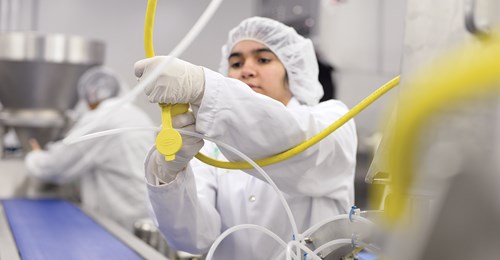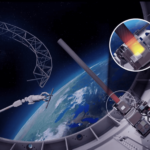Please welcome Nicole Detlor, Director of the Conestoga Food Research and Innovation Lab (CFRIL) at Conestoga College, in Kitchener, Ontario. Nicole has more than two decades of experience in the food industry. She has an engineering degree with a focus on food processing and control systems and has worked in product development and product life cycle management within the food industry in North America. In her first contribution to the 21st Century Tech Blog, she writes about taking a new approach to food waste to help us reduce our collective carbon footprint. Please welcome Nicole and send your questions and comments to this site.
Food waste contributes to greenhouse gas (GHG) emissions with substantial implications for climate change and resource depletion. A study done by Poore and Nemecek determined that food production produces 26% of global GHG emissions. There is an uncomfortable truth that when food gets wasted, the land, water, fuel, feed, fertilizer and other resources used to produce it are subsequently wasted.
Reports indicate that these wasted resources add up to more than 55 million tons of carbon dioxide (CO2) or equivalent GHG emissions. Unfortunately, organic food waste, though compostable, often ends up in landfills. As this food decomposes it releases methane (CH4), a GHG 25 times more potent than CO2. This double impact, emissions from production and decomposition, highlights the urgent need to reduce food waste to mitigate its negative effects on the climate.
Studies on the production and consumption of food point to key environmental issues and impacts. Best-before dates have 40% of Canadians throwing out food that is still good to eat. According to Too Good To Go, a social impact company targeting food waste, best-before marketing has created misconceptions about shelf-life. There is confusion between a best-before date and an expiration date resulting in food being trashed when it still can be eaten safely.
It is important to understand the difference between best-before and expiration dates, the latter found only on a limited number of foods that have strict safety or nutritional specifications. Meat and dairy products fit the latter category. But best-before dates represent a manufacturer’s guidance on how long a properly stored, unopened product will continue to provide optimal quality for freshness and taste. Unlike an expiration, food past its best-before date is still good to eat.
The Food Industry Needs To Join The Circular Economy
To combat the increase in GHG emissions and curb food waste The Ellen MacArthur Foundation promotes sustainability by implementing three circular economic principles:
- eliminating waste and reducing pollution,
- optimizing product and material usage,
- regenerating and restoring natural systems.
Implementing these principles involves rethinking how food is handled from production to consumption. At Conestoga, the Bloom Restaurant is a student-run facility implementing circular economic principles and practices. The restaurant is the first in Canada to display GHG emission icons for every meal on the menu. The restaurant conducts a plate waste audit to identify and address food waste patterns helping it to adjust menu options and portion sizes. The results show that Bloom is delivering quality food options for its customers while reducing food waste and promoting sustainability.
The Home Consumer’s Role In Combatting Food Waste
Consumers can make better choices if they understand the GHG impacts of the food and ingredient contents they buy for preparing meals at home. Meal planning and proper food preparation drastically reduce food waste. Understanding a product’s shelf-life and properly storing food after purchase makes it easier for consumers to avoid buying excess amounts that can go to waste. Using leftovers rather than throwing them out reduces GHGs as does composting remaining food scraps to minimize waste and reduce their environmental impact.
New technologies have emerged in the past few years to help curb home food waste and GHG emissions. Innovations like the Foodcycler, an appliance that turns food scraps into nutrient-rich compost, can help consumers manage food waste effectively at home.
Better Food Management Leads To A Healthier Planet
Conestoga uses Klimato a software tool to help calculate GHG emissions and to produce useful data to develop and implement more sustainable food management practices. At the Conestoga Food Research & Innovation Lab (CFRIL) the school helps the food industry by providing research and technical expertise as well as advanced facilities to offer solutions for small, medium, and large businesses in the food and culinary sector.
Working with industry partners and academia, Conestoga is developing innovative food solutions and support for product development lifecycles, including formula development, shelf-life studies, packaging testing, and scale-up using pilot plant equipment. In 2023, the food lab received the Minister’s Award of Excellence and the Excellence in Research and Innovation Award from the Ontario Ministry of Agriculture, Food and Rural Affairs.









